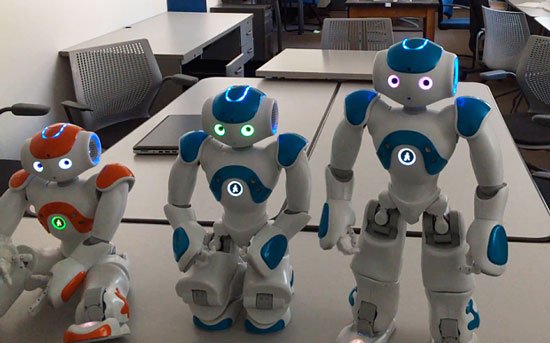
Some robots are trained in pain, others learn to draw correct ethical conclusions, but in New York three Japanese NAO robots displayed reactions considered to be the first signs of self-awareness. The excerpt is from a related report:
The emergence of consciousness/self-awareness in robots and artificial intelligence is thought to possibly trigger the “singularity,” the moment when machines will be able to evolve rapidly on their own, creating improved new generations and eventually surpassing human intelligence…
Although such a scenario seems distant at present, the fact that three Nao robots (of Japanese origin) managed to pass a modified version of the so-called “wise man puzzle” (the wise man test) may indicate that it is closer than we think.
In the case of the three robots, the roboticists programmed the three “lab animals” so that they would “believe” that two of them had undergone an operation (“dumbing pill”) to diminish their intelligence, leaving them mute—but they did not know which ones. In practice, two of them were rendered mute by pressing a button on their heads. All three were then asked which one had not received the “dumbing pill.” All three tried to answer “I don’t know,” but only one succeeded, meaning it was the one that was not mute. Hearing itself formulate an answer, the robot changed its response, declaring that it was the one that had not taken the “dumbing pill.”
This short exercise shows that a degree of self-perception can be achieved by a robot, and it represents significant progress.
The issue is not only that a robot found the correct answer, but that there are people who would certainly fail this very simple test in the position of “lab rats.” Therefore, the crucial question can be posed as follows: after how much consumption of “lobotomy pills” will the age of artificial intelligence dawn?
Get ready…
